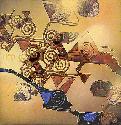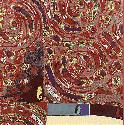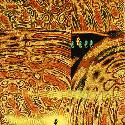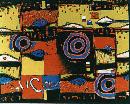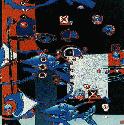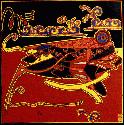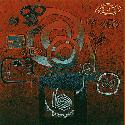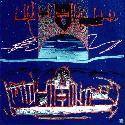
Learn foreign languages while watching your favorite YouTube videos!
The Language learning app is a handy set of tools that will help you improve your language skills by accessing subtitles, a built-in dictionary, and saving words and phrases you want to learn to revise.
Learning foreign languages will be an interesting and exciting experience for you!
My Art Credo:
I believe that abstraction is the purest and most spiritual art form, because it's about essence rather
than appearance, and the priority of the abstract over other art styles is that allows for more than just one interpretation. By eliminating recognizable objects and focusing instead on formal elements, abstract art provides a stimulus for multiple viewpoints, associations, feelings, and ideas.
It's difficult to explain what I mean and what statement my paintings should convey. To me, abstract
art is like music. When creating art, I arrange objects and images, colours and shapes into harmonious,
expressive, mood-filled compositions, much the way a musician composes notes into chords that
resonate with our emotions. My aim is to give visual form to non-visual qualities such as ideas, feelings
and sensations. In fact - my paintings are a true expression of my subjective reality.
Back to top
About My Style:
Using "formal" elements - line, colour, shape and volume, as well as creating new images, symbols and
signs - I seek to invent a new figurativeness, a new separate reality, different from the natural world we see around us. In this sense I could define some of my artworks as more surrealistic than abstract. I prefer to
call my art "abstract-surrealism".
Some abstract artists find inspiration in the elements of art itself: medium, size, shape, structure, scale
and design. They concentrate only on the form of the work, not the content.
This approach is alien to me, thus I find "non-figurative" abstraction senseless. Since I began to study
painting, in my earlier realistic artworks and later, in my abstract painting, I've always respected the "form
of the objects". That's why I require objects as images, symbols and signs in my abstract work.
I think the artist's realistic craftsmanship is always recognizable in his/her abstract art. When viewing
an abstract painting, I can tell if its creator is a good realistic painter or not. This is because realistic and abstract art are subject to the same steady basic rules and principles.
The motives that drive me to create a piece of art are my passion for painting, the pleasure of "playing the game" and the delight of creative discovery!
Back to top
The Process Of Creation:
I start my work from an image or scene from my imagination and subjective reality. The more I focus
on it, the more I appreciate its abstract qualities. Gradually my work becomes a metaphor for feelings and
ideas inspired by the real world, rather than being a record of its actual physical appearance.
My creative process, I compare to "playing a game", as mentioned above - a game with strong
aesthetic rules and principles.
It's not often I have a vision of the completed painting before I start. Mostly, a form or idea emerges as
I work. First come my drawings of "objects" collected over the years. Sometimes from "out of this world", but transformed by my imagination.
Then the "game" begins as I insert them into my PC and with its amazing help - I begin to compose. Adjusting the size, colours and textures, I transform their shapes and volumes. Mixing many layers of objects, lines and shapes, . . . eventually, from this intricate composing process, . . . my idea emerges!
I've always said that for me, the computer is merely another art instrument - like my brushes and
colour palette, but more universal. It allows me a shorter time to create many diverse compositions and
quickly visualize hundreds of variations of the original image, . . . a mission impossible with traditional
"tools of the trade"!
Then I must choose only the best possible composition to properly convey my idea. At this stage of the "game", I have to select the most unique combination of objects and textures, their colours and proportion, rhythm and balance!
During this "discovery" process, my intuition is guided only by my professional criterion as I feel my
way and seek to find "order in chaos". Intuitively I "know" when the project is ready, . . . but it's very
difficult for me to define just "how" I make that decision. I must be absolutely satisfied with the result,
certain that my project needs nothing more, . . . and yet, nothing less!
When the project is ready for the next step, . . . I transfer the image from the computer screen to an
actual painting on canvas or paper.
I'm often asked how much I improvise on the actual painting? My answer is: "not too much", as 90%
of my creative work is completed during the composition process. Nevertheless, I strictly abide by my
computer image, although there is always room for "some" improvising while I paint, especially the details
and textures. But any improvisations must not affect the final painting as to alter it from the computer image.
Concerning the details: I devote "more than a great deal" of attention to them, because I wish to
attract viewers equally, . . . from the long as well as the short distance. (this applies to "across the gallery"
as well as "across the country"!)
Back to top
About the new paintings:
During the production of my latest paintings, I will often employ the use of an airbrush. This "fantastic" instrument contributes another exciting dimension to my paintings!
Biography: Overview:
1965 - Valery Varbanov was born in Bulgaria.
1985 - 90 - Studied in the Fine Arts Department of "St. St. Ciril and Methodius" University in Veliko Tarnovo,
Bulgaria, specializing in plastic arts and oil painting and graduated with an M.A. degree in Fine Art.
1992 - Became a member of the Union of Bulgarian Artists. Has since, taken part in many group national and
international exhibitions.
1993 - In collaboration with his wife, the artist Maria Varbanova, he had his first exhibition in the State Gallery in Plovdiv, Bulgaria.
1995 - Valery and Maria Varbanov realized their second collaborative exhibition displaying 17 large-size oil paintings - in the City Gallery Of The Artists Association, Plovdiv, Bulgaria.
1996 - After visiting Norway, Valery and Maria Varbanov established relationships with two art galleries there.
Since then, they have exhibited their work exclusively in the "Galleriet" and "Amare" Galleries in
Stavanger, Norway.
1997 - Valery's first solo exhibition in "Galleriet", Stavanger, Norway.
1998 - 2002 - Maria has returned to "classical realistic art", . . while Valery has taken part in many group
exhibitions in Norway and Bulgaria. Abstract paintings by Valery Varbanov are to be found in various private
collections at home and abroad.
Country: Bulgaria
E-mail: vvarbanov@yahoo.com
Site: http://www.varbanov.evro.net




